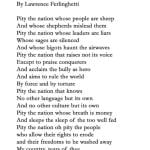Anatiolios offers this explanation of Athanasius’ defense of homoousios : “the meaning of the Nicene homoousios is contained in its function as a guide to a certain way of reading Scripture. An immediate hermeneutical consequence of this principle is that efforts to understand this term primarily by recourse to secular usages of ousia and cognate terms are misguided. Neither the council fathers of Nicea nor Athanasius himself were working with any determinate technical sense of ousia or homoousios . Moreover, they were not attempting to signify the divine essence by directly invoking an objective reference, whether the being of God or some creaturely analogue. The meaning of homoousios thus resides not in its inherent capacity to invoke an objective referent of its own, but rather in its assigned function of regulating how scriptural language as a whole refers to God and Christ.” The word does “successfully refer to God,” but it does so because it “regulates the reference of the whole nexus of scriptural paradeigmata in the direction of the radical ontological correlativity of Father and Son.”
Anatiolios is exactly right about Athanasius, and comments, as he recognizes, raise some important methodological questions: “Do the scriptural patterns of naming Christ and the scriptural way of telling the story of Christ equally permit two rival interpretations, so that endorsing one and rejecting the other amounts to a heteronomous determination of the meaning of Scripture?” Is Scripture ambiguous, a wax nose, that actually does leave open the question of the Son’s ontological status? Athanasius answers No: “He argues that the Nicene homoousios provides the only correct interpretation of scriptural language . . . . The regulation of scriptural language provided by the homoousios arises from within scriptural language and narrative considered as a whole – not from without.”










